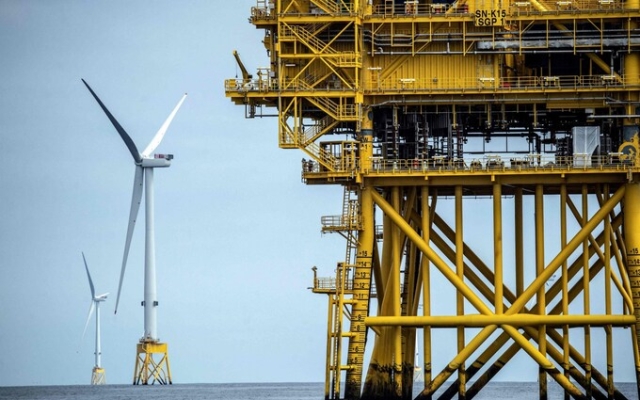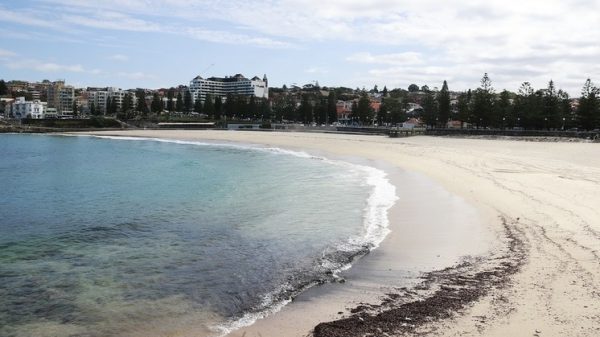 SSE favors offshore wind projects due to advantages of scale. Photo: AFP/ANDY BUCHANAN
SSE favors offshore wind projects due to advantages of scale. Photo: AFP/ANDY BUCHANAN
The UK's biggest wind farm developer has ruled out the possibility. Building new onshore wind farms in England and Wales is a blow to the government's net-zero emissions plans.
Alistair Phillips-Davies, chief executive of SSE, said his company was «unlikely to build one wind farm» in England or Wales, despite the government's recent relaxation of planning rules.
Mr Phillips-Davies said that there is too little space, too many protests and not enough wind. He added that England and Wales were “particularly difficult places to do business”.
He also warned that future onshore projects in Scotland were likely to be limited.
The announcements are a blow to the government's ambitions to boost onshore wind development in England. Upgrade Secretary Michael Gove and Net Zero Secretary Claire Coutinho last week relaxed planning rules to make it easier to build onshore wind farms.
Ms Coutinho said onshore wind farms had a “key role” in “helping we need to create a cleaner, cheaper and more secure energy system for the UK.»
Onshore wind turbines are shutting down: cumulative installations
Mr Phillips-Davies said the future of England's wind industry lay overseas, where developers could build on a much larger scale and with far fewer protests.
His faith in offshore wind remains despite Friday's disastrous renewable allocation round, in which the government set the price of offshore wind so low that no developers have come forward with new projects. This means the UK is likely to miss its target of 50 gigawatts (GW) of offshore wind capacity by 2030.
The government has set the price at £60 per megawatt hour in today's money . Mr Phillips-Davies compared this to the £74 offered by the Irish Government in its recent commitment to offshore wind and called on the UK Government to consider offering similar amounts.
He said: “Net zero and renewables will cost money, but it is better than buying oil and gas from ever-dwindling sources in the Middle East, Far East or anywhere else for that matter. The capital costs may be high, but once it's built, the wind is free.»
Offshore developments are largely free of the controversies, conflicts and planning regulations that plague onshore wind farms.
p>Until last week, developments on land could be effectively blocked with just one objection. The system has become highly politicized, with Tory MPs and the Labor Party successfully fighting to remove them.
Despite a rule change last week designed to make life easier for property developers, Mr Phillips-Davies said the industry itself was losing money . interest in onshore developments because they were small-scale in nature.
 SSE's Alistair Phillips-Davies is betting offshore projects will generate the bulk of wind power in the coming years. Photo: Chris Ratcliffe/Bloomberg Finance LP
SSE's Alistair Phillips-Davies is betting offshore projects will generate the bulk of wind power in the coming years. Photo: Chris Ratcliffe/Bloomberg Finance LP
“I think offshore wind has an important role to play in the UK, but it will not be on the scale of offshore wind in the future,” he said. “The UK is a relatively small territory with a large population. Scotland also has problems protecting wild lands and already has a lot of wind farms there.”
Building in Wales has been particularly difficult due to backlash from local communities, he said.
“There is no point in fighting with people, as was the case in Wales. The ones I worked with in Wales were full of trying to convince people.
“Mostly onshore operations are for small installations, but the scale takes place offshore. Scotland alone has 25GW of offshore capacity… whereas I wouldn't expect SSE to be able to build another 4GW onshore in the UK. From where we are today, we could reach 1GW.”
The latest UK wind energy data shows that offshore turbines produce energy much better than onshore ones. There are 9,000 onshore wind turbines in the UK, which together have the capacity to generate around 15 GW — about the same as around 15 gas power stations.
However, only 2,652 offshore turbines produce approximately the same amount of electricity. This is because offshore wind turbines tend to be much larger and benefit from more consistent and stronger winds.
1808 Reduced Internal Power
Offshore turbines also do not cause any complaints related to visual interference , low-frequency rumble or flickering of rotating turbine blades caused by sunlight, which disturb communities around some coastal structures.
Mr Phillips-Davies said: “We already have hundreds of onshore wind turbines and dozens of wind farms in the UK and Ireland. We only have one in England and not many will be built in England or Wales… A lot of companies have given up.»
SSE is already building more offshore than any other company in the world, including the giant Dogger project Bank with a capacity of 3.6 GW. It will be the largest offshore wind farm in the world, covering several hundred square miles (an area roughly the size of Greater London) and capable of powering 6 million homes.
In the north, its next project will be Berwick Bank, an even larger project , potentially capable of producing 4.1 GW of electricity. And it is also completing construction of Seagreen, Scotland's largest and world's deepest offshore wind farm, capable of powering 1.6 million people's homes.
Mr Phillips-Davies said: «You can do something on a huge scale at sea, and there is a lot of sea there.”

























































Свежие комментарии